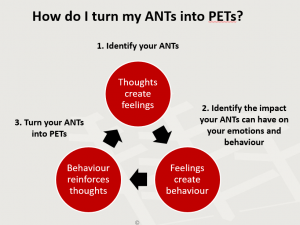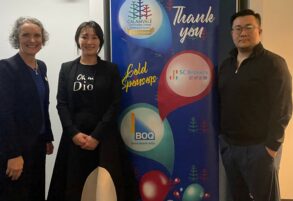Positive Education at Calamvale Community College


In the last newsletter the concepts of automatic negative thoughts (ANTs) and performance enhancing thoughts (PETs) were introduced. When we make an effort to become aware of our ANTs it is possible to identify how our emotions and behaviour are linked to those ANTs. We then place ourselves in a position that enables us to consider options for adjusting an ANT so that it becomes a PET. Here is a very simple example of how you can help your child turn an ANT into a PET.
Child: ‘Argh!!!! I am not doing any more of my homework! It is too hard, I can’t do it!’
Parent: ‘I can see that you are having the thought that you can’t do your homework because it is too hard and that thought is making you feel frustrated and wanting to give up. If you could change your thoughts just a little bit you might find that you are able to do a bit more and feel a bit better. How could you change the thought, ‘I can’t do it’, so that it doesn’t stop you trying to do a bit more and to make that frustrated feeling have less impact on you?’
Child: ‘I can’t do it yet.’
Parent: ‘Great! Give that a try! By turning your thought, ‘I can’t do it’ to ‘I can’t do it yet’, I’m sure you can have a go at doing some more. You could also add in, ‘I can ask my teacher for help tomorrow’. You are likely to get more done and feel less frustrated by thinking like this.’

Brainstorm alternatives
Is there a more realistic alternative?

Edelman, S. (2013). Change Your Thinking (3rd Edition): Sydney, ABC Books.
Some teachers are using the ANTs and PETs acronyms in their classrooms. However, you do not need to use the acronyms to help your child adjust their thinking.
Keep your eye out for more about Positive Education at CCC in upcoming newsletters.
Nerieda Anderson
Calamvale Community College
Developmental Guidance Officer, Psychologist










